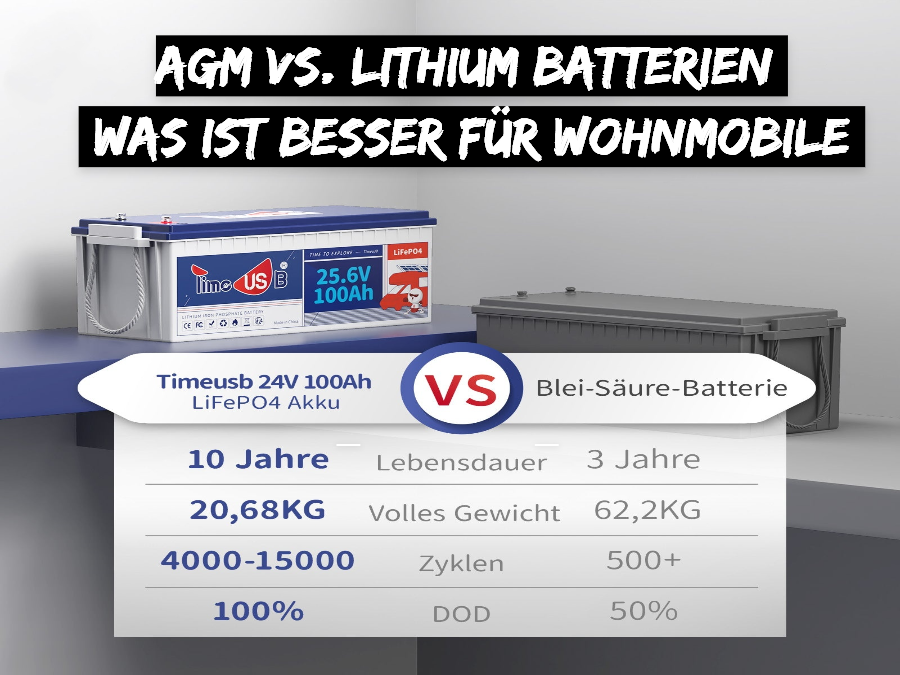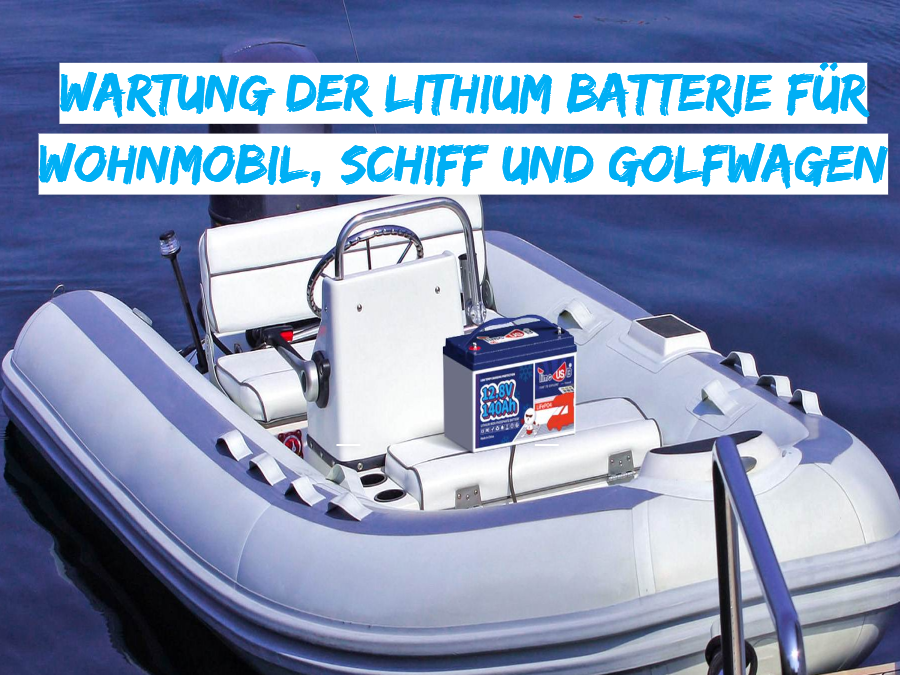Is it harmful to completely discharge a lithium-ion battery?

Lithium-ion batteries, commonly known as Li-ion batteries, are commonly used in solar power kits and serve as excellent power sources for solar panels, RV recreational batteries, and trolling motor batteries. They are also suitable for running tools during solar power maintenance. These batteries are characterized by low maintenance, high efficiency, and long lifespan.
A frequently asked question is whether it is harmful to fully discharge a lithium-ion battery. In this article, we will explore this question in detail, provide a clear understanding of the effects of fully discharging lithium-ion batteries, and offer best practices for their optimal use and maintenance.
information about charging cycles
A charge cycle is the process by which a battery is charged from its discharged state to its fully charged state and then discharged again. For example, if you use half of your battery's capacity and then charge it fully, this counts as half a charge cycle.
For lithium-ion batteries, a charge cycle is typically measured from 0% to 100% charge. It is important to note that each full charge cycle of a battery contributes to the overall degradation of battery capacity over time. This degradation is often measured by the number of charge cycles a battery can go through before its capacity decreases significantly.
Is it harmful to completely discharge a lithium-ion battery?
It is generally not recommended to fully discharge a lithium-ion battery. Fully discharging a lithium-ion battery can cause irreversible damage and shorten its overall lifespan. Lithium-ion batteries are designed to operate within a specific voltage range. Full discharge can cause the voltage to drop below the safe threshold, which can lead to problems such as cell degradation, capacity loss, and even safety concerns.
To extend the life of lithium-ion batteries, you should avoid complete discharge if possible. Most modern electronic devices such as smartphones, laptops and Timeusb Lithium Deep Cycle Batteries have integrated battery management systems that prevent the battery from being completely discharged. It is recommended that you charge your devices before they reach a critically low battery level to ensure the longevity and performance of the lithium-ion battery.
Timeusb Deep Cycle Lithium Batteries LiFePO4 have a lifespan of 4000 cycles at 100% discharge without affecting the performance of the battery. In this condition, the battery can be used for 10 years. However, if the battery is not fully discharged, it will have a longer lifespan.

Timeusb 12V 140Ah lithium battery with low temperature protection
depth charge vs. flat charge
Deep charge and shallow charge refer to the depth of discharge during use of rechargeable batteries, especially lithium-ion batteries.
- depth charge: This occurs when a battery is significantly discharged before being recharged. For lithium-ion batteries, deep charging means discharging the battery to a relatively low capacity level, such as 20% or less, before being recharged. Deep charging can place greater stress on the battery, potentially leading to faster degradation over time.
- Flat load: Flat charging, on the other hand, recharges the battery when it has only been partially discharged. For lithium-ion batteries, this may mean recharging the battery when it is at 50% capacity or more. Flat charging generally puts less stress on the battery and can contribute to a longer overall battery life.
A lithium battery typically lasts 300 to 500 charge cycles. Assuming that a full discharge gives a capacity of X, lithium batteries can deliver or supplement a total of 300X to 500X power during their lifetime if the capacity drop after each charge cycle is not taken into account. If half the capacity is used each time, these batteries can be charged 600 to 1000 times, and if 1/8 of the capacity is used each time, they can be charged 2400 to 4000 times.
One Timeusb LiFePO4 Lithium Deep Cycle Battery lasts 4000 cycles when discharged to 100% of its capacity. If half of the capacity is used each time, the Timeusb battery can be charged 8000 times, and if 1/8 of the capacity is used each time, it can be charged 32000 times.
Consequently, the number of times a lithium battery can be charged is unpredictable if done randomly. Essentially, no matter how a lithium battery is charged, a total of 300X to 500X power is always added. Therefore, one can conclude that the lifespan of a lithium battery is proportional to the total charge of the battery, not the number of charges. Both deep discharge and shallow charging have similar effects on the lifespan of a lithium battery.
Lithium batteries benefit more from shallow discharge and shallow charging. Deep discharge of lithium batteries is only necessary if the device's power module is calibrated for lithium-ion batteries. Therefore, lithium-ion powered devices are not limited by the process and can be charged at any time without affecting battery life.
Shallow cycling is designed so that batteries can deliver short bursts of energy and not be used for an extended period of time before being fully charged. Deep cycling ensures that your battery can handle long-term use by reaching well below 50% discharge before needing to be recharged.
It is important to note that shallow cycle batteries do not like being discharged for long periods of time. To look after your shallow cycle battery and extend its lifespan, you should install a discharge control circuit that will shut off the battery when it is discharged to around 50% and recharge it as quickly as possible. In addition, a smart charge/discharge monitor is crucial to keeping your deep cycle battery or shallow cycle battery in good working order.
How does storage affect battery life?
Due to their minimal loss of capacity during idle time compared to other battery types, lithium-ion batteries are among the most convenient options for storing solar energy. This is especially beneficial in scenarios where solar energy is rarely used, such as in a summer house, thanks to their low self-discharge rates.
The way you store a battery can significantly affect its lifespan. Here are some important factors to consider:
1stTemperature: High temperatures can accelerate the degradation of battery materials and lead to a shorter lifespan. Likewise, storing batteries in extremely cold temperatures can affect their performance. It is best to store batteries at moderate temperatures to maintain their health.
2. Charge level: The storage of batteries at full charge or completely discharged for long periods of time can have a detrimental effect on their lifespan. Ideally, lithium-ion batteries, for example, should be stored at around 50% charge to minimize degradation.
3. Humidity: Excessive moisture can cause corrosion and damage the battery's internal components. Storing batteries in a dry environment is important for their longevity.
4. Protection against physical damage: Protecting batteries from physical damage such as impact or crushing is crucial. Any physical damage can compromise the integrity of the battery and shorten its lifespan.
5. Protection against short circuits: Storing batteries in a manner that prevents accidental short circuits is important for safety and to maintain battery health.
6. Avoid prolonged inactivity: If a battery is left unused for long periods of time, it can suffer from self-discharge and chemical changes that can affect its ability to hold a charge.
In summary, storage conditions play a critical role in preserving the life of a battery. Proper storage includes maintaining moderate temperatures, storing at the appropriate state of charge, protecting against physical damage and short circuits, and avoiding prolonged inactivity. Following these guidelines can help maximize battery life and performance.
How to maintain the health of your lithium-ion battery
It's important to know how to maintain the health of lithium batteries while charging. "Battery life" refers to the amount of time a device can operate before it needs to be recharged, while "battery life" refers to the amount of time until a battery needs replacing. The combined actions you perform with your device will significantly affect battery life and longevity. Regardless of usage, there are ways to preserve battery life.
Extending battery life reduces the economic and environmental impacts of producing new batteries, including raw material consumption, mining impacts, greenhouse gas emissions and disposal of used batteries.
It is important to understand not only what maintains the current charge of the battery, but also how to properly care for the battery, which is equally important. This will ensure that the battery works more effectively. Here are some tips for maintaining the health of your lithium-ion batteries:
1. Use partial discharge cycles
Lithium-ion batteries should not be fully discharged and recharged frequently (deep discharge). Using only 20% or 30% of the battery capacity before recharging the battery will extend the battery life significantly. Five to ten shallow discharge cycles are approximately equal to one full discharge cycle.
2. Avoid high charging and discharging currents
High charging and discharging currents shorten the life of the battery because they place a heavy load on the battery.
3.Avoid very deep discharges
Extremely deep discharges can irreversibly damage a lithium-ion battery, possibly causing an internal short circuit and rendering the battery unusable and dangerous.
4. Limit the battery temperature
Minimizing extreme battery temperatures, especially avoiding charging below 0°C, will improve battery health. Charging in subzero temperatures can promote metal plating, potentially causing an internal short circuit, making the battery unstable and dangerous.
5. Avoid charging lithium batteries to 100% capacity
Lowering the float voltage can improve battery cycle and life at the expense of capacity. A 100-300 mV drop in float voltage can improve cycle life by 2-5 times or more.
6. Avoid overloading
Overcharging can accelerate irreversible capacity loss and cause internal metal plating, which can lead to internal short circuit, overheating and instability.
7. Avoid high humidity
Storing or using lithium-ion batteries in high humidity environments may affect battery life and performance.
8. Use a suitable battery charger
The float voltage and charge termination mechanism of a battery charger play an important role in extending battery life. Chargers with lower float voltage can extend battery life. Chargers that use techniques to terminate charging with minimal charging current can also extend battery life.
Using a charger designed for lithium-ion batteries can help adjust the charge and limit damage to your battery. The charger that came with your battery is the best option. Here is the recommended charging voltage.

Timeusb LiFePO4 lithium battery chargers are designed for proper charging of lithium batteries and provide multi-stage protection against over-temperature, reverse polarity, output short circuit, over-current and output over-voltage.
Conclusion
In summary, completely discharging a lithium-ion battery can have detrimental effects on its overall health and performance. By understanding the effects of deep discharge and following best practices for battery use and maintenance, users can extend the life of their lithium-ion batteries and optimize performance. Ultimately, by implementing these practices, individuals can ensure that their lithium-ion battery-powered devices and systems continue to operate reliably and efficiently for years to come.
By following these guidelines, individuals can make informed decisions about the use and care of their lithium-ion batteries, ultimately maximizing their lifespan and performance.
This article serves as a comprehensive guide to understanding the effects of fully discharging lithium-ion batteries and provides actionable recommendations for users to maintain the health of their devices' power source.




